
If you’re starting in your jewelry making venture and searching for some inspiration for your designs, look into different stone settings of jewelry. Now let’s see some of the famous setting types for gemstone jewelry and diamond jewelry. Here are 8 Brilliant Classification of Stone Settings.
From flush setting to channel setting, we’ll talk through how each technique looks, difficulty level, and the basics of how to utilize each one.
What are the different types of stone settings?
1. Channel setting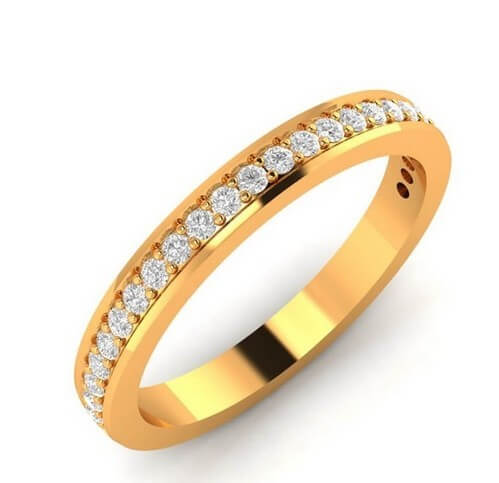
Commonly used as a wedding ring design, channel setting is an ideal way to add something extra to your designs.
The stones are nestled side by side with no metal in between.
When you’re trying out this technique, keep the seats small at first and gradually make them bigger to fit the stones in. This helps to ensure the fit is as accurate as possible.
2. Claw setting
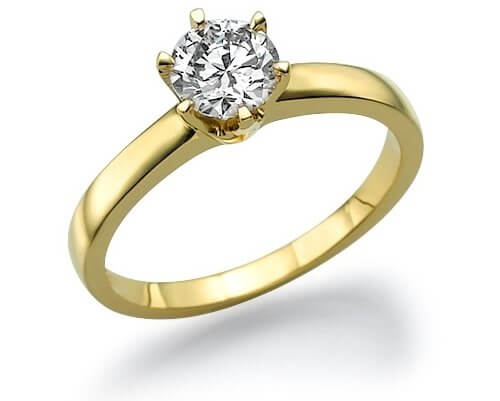 Also referred to as a prong setting, one of the most recognizable types of stone setting is the claw setting.
Also referred to as a prong setting, one of the most recognizable types of stone setting is the claw setting.
This mounting style minimizes the amount of metal used, allowing more light to pass through a diamond or gemstone.
Used in single stones and clusters, the claw setting allows the most light into the stone out of all the types of jewelry settings.
3. Grain setting
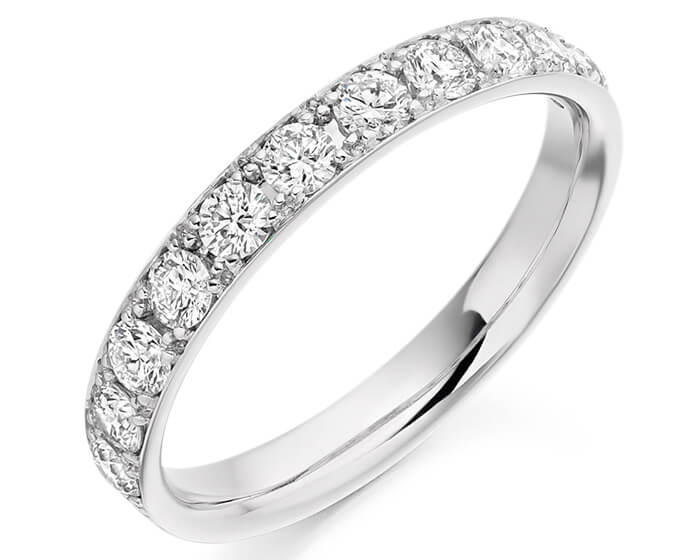 Similar to the pavé setting, this setting uses small stones that are held together by tiny prongs.
Similar to the pavé setting, this setting uses small stones that are held together by tiny prongs.
There’s no visible gap between the stones; this setting gives the appearance of a diamond-encrusted ring.
4. Pavé setting
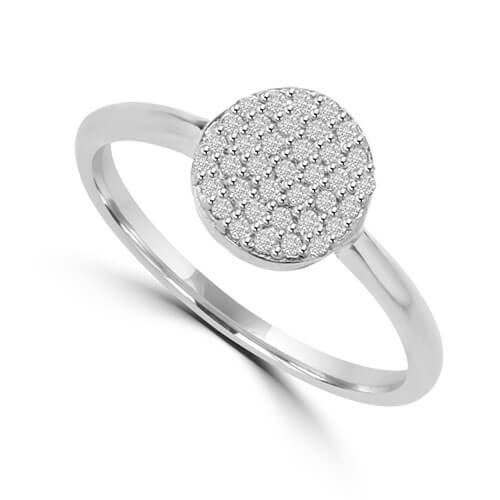 Pronounced “pa-vay,” the pavé setting uses multiple smaller stones to cover a larger surface of a pendant or ring.
Pronounced “pa-vay,” the pavé setting uses multiple smaller stones to cover a larger surface of a pendant or ring.
All the stones are placed without gaps in between. Then small beads of metal are pulled from the surface to keep the stones in place to create the effect of a solid piece.
Although the pavé setting isn’t technically challenging, there are a reasonable number of steps to follow – and they need to be performed precisely.
5. Illusion setting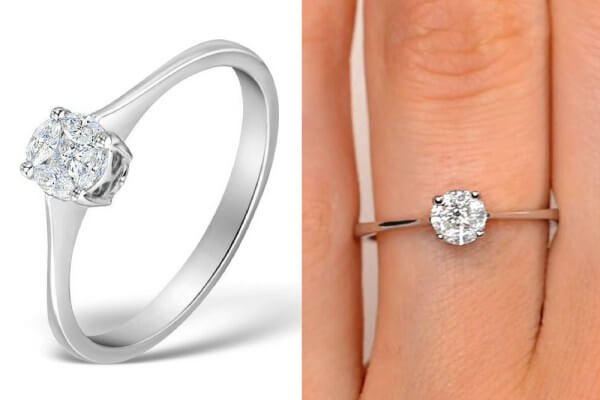
An illusion setting is one of the most popular for engagement rings, out of the different types of jewelry settings we’ve discussed today,
The illusion setting lives up to its name. The set stone makes smaller diamonds appear larger than their size.
To achieve this effect, the prongs hold the stone at each edge with a ‘bright cut’ to resemble the facet and diffuse the outline.
With a similar technique to the bezel setting, beginners can move onto trying the illusion setting once the bezel setting has been mastered.
6. Bezel setting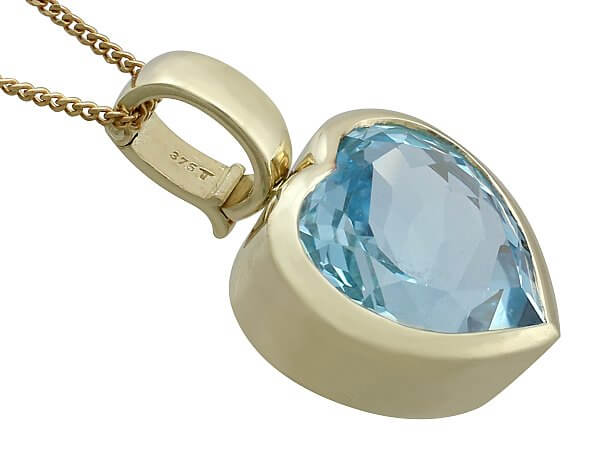
Traditionally used to set cabochon stones, the bezel setting is an ideal technique for beginners.
A bezel setting can use with a simple process and classic appearance. Create your own setting with the bezel wire or, alternatively, can purchase bezel cups.
Use a cup or your bezel wire before pushing a thin layer of metal. This will surround the stone and keep it in place.
7. Tension setting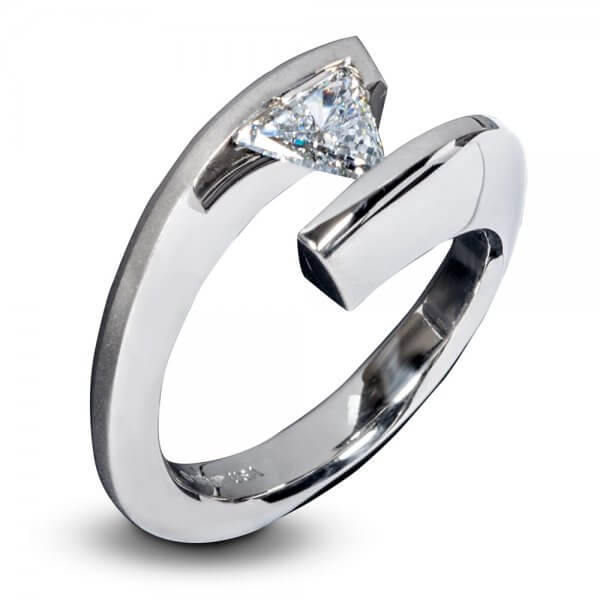
One of the unusual stone settings is the tension setting. It involves two pieces of metal running side of the stone, with a small groove for the stone to sit in.
This is ideal wanted to add a personal touch to your pieces, manipulate the shape of the prongs that hold the stone in place.
It is a more advanced technique. If the metal holding the stone is misshapen, it can lose tension. It increases the risk of the stone coming loose.
8. Flush setting
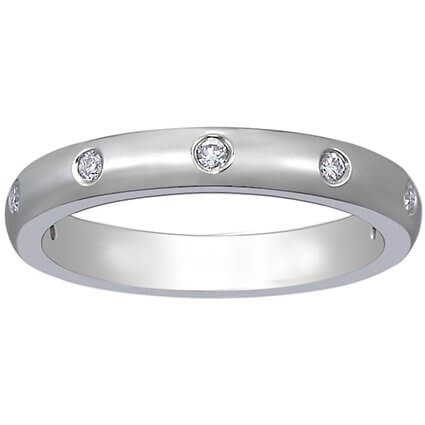 Depending on how you control the tools, the flush setting can be one of the most accessible or most complicated stone settings.
Depending on how you control the tools, the flush setting can be one of the most accessible or most complicated stone settings.
Also known as a gypsy setting, this technique is similar to a channel setting but instead uses a stone on its own.
Using a burr, a groove is made around the seat so that the stone will sunken in, leaving a flush or level. After that, finish with the rest of the band.
Now you know the top classification of stone settings; now it’s time you to try them for yourself.
Whichever technique you choose, make sure you have all the gemstones and jewelry tools you need before you start. 8 Brilliant Classification of Stone Settings.
Share this post

